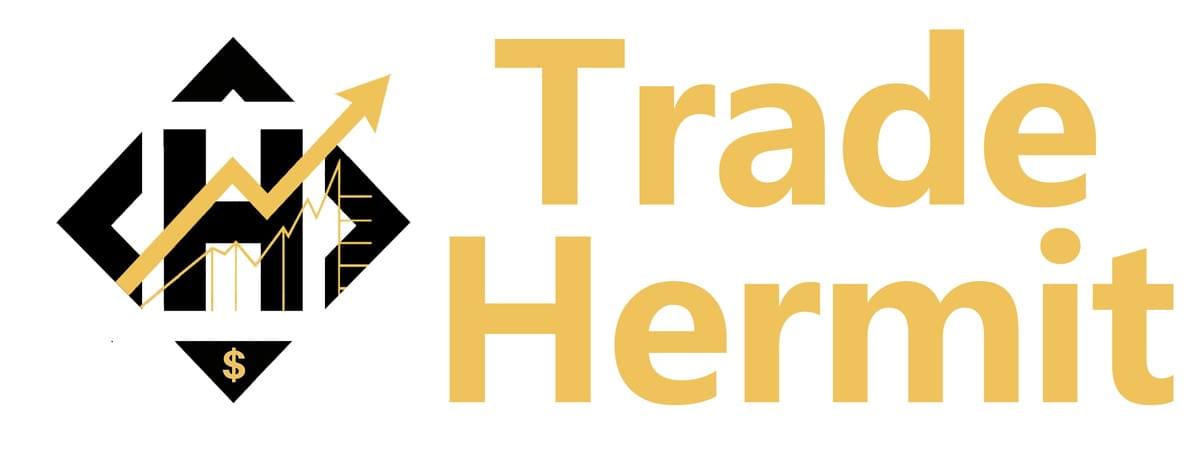Recently, the international monetary system has accelerated its evolution, sparking broad discussion about the status of the dollar and its role as an anchor. This article proposes that dollar hegemony rests not only on the “legal anchor” of national credit but relies even more heavily on its financial markets’ “functional anchor.” This, perhaps, is the secret behind the dollar’s repeated ability to weather crises and even bolster and strengthen its position.
Currency anchors form the foundation of currency value stability. Purchasing power arises from scarcity and real usage.
I. Anchoring the Sovereign Currency: From the Gold Standard to the “Legal Anchor”
Currency forms have evolved alongside their value anchors. In the early human era, currencies were tangible items like shells and cloth—valued for their practical use. Later, gold and silver—scarce, stable, divisible—became universally recognized as money. With the development of commodity exchanges, paper money emerged. Yet paper has no intrinsic value; as Adam Smith noted in The Wealth of Nations, “A paper currency ... is equivalent in every respect to a gold or silver currency, because the latter can always be obtained in exchange” — underscoring that paper currency’s true value lies in credit, not the paper itself.
In the late 19th century, the “classical gold standard” institutionalized precious metal anchoring, with major capitalist countries pegging currencies to a fixed weight of gold. World War I and II destroyed that system, as nations abandoned gold to finance war efforts, plunging the monetary order into chaos. Post-WWII, the Bretton Woods system rebuilt order via a “dual peg”—dollars pegged to gold, other currencies pegged to the dollar. But after Bretton Woods collapsed in 1973, currencies fully detached from precious metals. Humanity entered an era of pure fiat money.
In the post–Bretton Woods world, the global currency system no longer relies on gold but on sovereign national credit as its “legal anchor.” Modern fiat currency is essentially a special form of public debt backed by sovereign credit. Unlike traditional debt, it requires no physical redemption at maturity; it is instead a perpetual liability of the central bank. Its real “repayment” is the holder’s firm belief that the currency will function economically. Such trust rests on two institutional pillars:
- Everyday transactional trust – the belief that currency can always be spent. As Borio (2019) notes, banks’ provision of elastic payment media is the institutional cornerstone of modern money’s routine function. In a two-tier monetary system, public and corporate transactions depend on commercial-bank deposits, while interbank settlement relies on central bank reserves. By setting policy rates and committing to supply or absorb liquidity at those rates, central banks ensure smooth monetary payments.
- Long‑term store‑of‑value trust – the belief that money saved today will retain value in the future, supported by price stability, which preserves purchasing power, and financial stability, which protects deposits from bank failures.
Modern central banks are tasked with defending these two pillars via monetary policy, macroprudential regulation, and financial safety nets. That institutional trust ultimately draws from sovereign credit, supported by the state’s power to tax, its legal system, and its capacity for political and social stability. Thus modern fiat money’s anchor is not physical gold nor an abstract belief, but a comprehensive credit system built on sovereign credit, backed by strong institutions and operated by professional central banking.
II. Anchoring the International Currency: The “Functional Anchor” of a Robust Financial Market System
The core feature of the modern international monetary system is its dual‑anchor mechanism. A sovereign fiat currency’s foundation is always its legal anchor, supported by sovereign credit, law, and institutions to ensure domestic circulation. However, for global acceptance, currency must rely on the voluntary choice of international actors. Sustained trust and widespread usage require not only stable value but also advanced financial infrastructure and market liquidity.
The evolution of the dollar’s global status confirms this logic. Its dominance exceeds legal anchoring, resting on a more powerful functional anchor—a financial market of breadth, depth, and efficiency, underpinned by advanced infrastructure and reinforced by synergy between technology and finance:
- Efficient infrastructure: Supports thousands of billions in daily cross-border transactions, featuring:
- Highly liquid forex markets enabling instant, low-cost currency exchange.
- Efficient, resilient cross-border settlement systems (e.g., CHIPS).
- Well-developed trade finance and hedging instruments.
- Shift from goods trade to global capital flows: The BIS 2022 Triennial Central Bank Survey shows that while trade-related FX flows average $87.6 billion/day, global FX trading averages $7.5 trillion/day—nearly 86 times greater—revealing that financial demand for global wealth allocation now drives the international monetary system.
- Value storage capacity: Global economies, especially central banks, accumulate vast wealth and reserves, needing safe, efficient markets. U.S. markets shine in:
- Breadth – Extensive asset classes (stocks, corporate bonds, derivatives) provide global diversification. U.S. Treasuries are considered the benchmark “risk‑free asset,” favored for official reserves.
- Depth – Ability to absorb large trades with minimal price disruption. BrokerTec data show high bid‑ask order correlation across prices; 2024 U.S. Treasury turnover (~3.2% of outstanding) surpasses major European/Japanese markets (1–2%).
- Liquidity – The Bloomberg Treasury Liquidity Index measures liquidity; though it peaked above 5.3 in 2024, it has since eased near 3. Still, structural shifts (SLR, market-makers’ reduced capacity, rising U.S. debt) have dampened liquidity. In response, the U.S. has relaxed SLR, launched a Standing Repo Facility, and rolled out repo programs.
- Tech‑finance synergy: America’s tech revolutions have propelled long-term prosperity in the U.S. stock market. A direct-finance structure fosters innovation, supports emerging companies, and injects sustained energy into markets. This synergy enhances the attractiveness of dollar assets to global capital, reinforcing the dollar’s functional anchor.
In summary, the dollar’s international status rests on its dual-anchoring system: the legal anchor underpins its legitimacy in global finance, while the functional anchor, created by financial depth, tech‑finance synergy, and innovation, fulfills major roles in global storage of value, creation of value, and risk hedging—explaining how the dollar has remained strong despite the relative decline of the U.S. economy.
III. Historical Validation: How the “Functional Anchor” Fundamentally Secured Dollar Hegemony
The dollar’s standing as an international currency wasn’t inherited—it was forged through the gradual establishment of functional anchoring via its financial markets. Over history, the dollar has leveraged market depth and breadth to preserve its dominance post–Bretton Woods. It has repeatedly emerged from volatility stronger than before.
1.First Rise: Institutional Breakthrough & WWI Opportunity (late 19th c–1920s)
In the late 19th century, although the U.S. led in economic power, the dollar lacked global financial influence due to institutional shortcomings:
Banking limitations: Before 1913, U.S. national banks were barred from Bankers’ Acceptances, crucial trade financing tools dominated by London.
No central safety net: Suspicion of centralized power left no central bank, causing liquidity crises like the 1907 Panic, resolved only by J.P. Morgan’s private intervention.
The 1907 crisis led to the 1913 Federal Reserve Act, enabling U.S. banks to engage in trade financing and establishing a lender of last resort. The nascent New York BA market initially suffered low liquidity until the Fed stabilized it by becoming the first buyer, lowering discount rates, reducing borrowing costs, and attracting global investors. This created a vibrant dollar trade finance market.
WWI disrupted European markets, creating a vacuum quickly filled by New York. By the mid-1920s, NY's financial market rivaled London’s and financed trades between third countries. For the first time, the dollar's rise was rooted not just in economic scale but in its financial services.
2.Entrenchment: Bretton Woods (1944–1971)
The Great Depression forced nations to abandon gold for monetary policy flexibility, leading to destructive currency devaluations. Post-WWII reconstruction through Bretton Woods established a “dual peg” system. Though pegged to gold in name, the system’s stability depended on the dollar’s functional anchoring:
The U.S. financial system supplied efficient capital flows via its banking networks, clearing systems, and regulatory frameworks.
U.S. Treasuries offered safe, liquid assets for reserves, making dollar reserves an appealing investment rather than mere policy tools.
Without the functional anchor, this system would have been an empty shell.
3.Survival: Post–Bretton Woods Era (1970s)
The collapse of Bretton Woods marked the first crisis of dollar hegemony. Fiscal excess and inflation led Nixon (1971) to close the gold window; by 1973, currencies floated freely.
Though many expected the dollar to topple, it endured, thanks to its functional anchor. Global capital continued to choose dollars for efficiency and liquidity. The 1973 oil crisis strengthened this via the Petrodollar recycling mechanism: OPEC nations, unable to absorb massive oil revenue, deposited dollars into U.S. Treasuries, binding oil trade to the dollar and expanding demand for Treasuries.
Germany and Japan illustrate the opposite. Germany delayed freeing the mark, limiting capital inflows; Japan kept its markets closed and then blew its bubble. Neither developed the financial depth necessary.
Still, inflation soared to 12.3% in late 1974, shaking dollar confidence. The turning point came with Fed Chairman Paul Volcker in 1979, raising rates to ~20%, inducing recession, but ultimately proving the Fed’s commitment to value stability—rooted in the legal anchor of sovereign credit and institutional central banking.
4.Strengthening: Asian Financial Crisis & Precautionary Reserves (1997–98)
The Asian financial crisis revealed the fragility of fixed exchange regimes with open capital accounts. IMF loans were conditional and limited sovereignty. As a result, emerging economies built precautionary reserves, investing surpluses in U.S. assets (especially Treasuries). From late 1990s to 2008, emerging‑market reserves grew from $0.7 trillion to $5.2 trillion, reinforcing the dollar’s functional anchoring via global demand for U.S. safe assets.
5.Critical Test: “Dollar Paradox” in the 2008 Global Financial Crisis
Though originating in the U.S., the crisis saw capital flood into U.S. markets: Treasuries became the ultimate safe asset. During peak panic, 3‑month Treasury yields went negative—investors paid for safety amid global turmoil.
The Fed’s response deepened the functional anchor:
It became the global lender of last resort, supplying dollars via swap lines to major central banks.
It acted as ultimate market‑maker, innovating credit‑market facilities to support nonbank financial institutions, corporates, and auto firms—showing commitment to serving as backstop for various credit markets.
Ironically, the crisis weakened European challengers: offshore euro shrank, while offshore dollar recovered, leaving the dollar ascendant under the “TINA” effect.
6.Reconfirmation: Covid‑19 and Normalized Global Liquidity Support
In March 2020, the Fed responded swiftly to pandemic‑induced market shocks, launching a suite of liquidity tools and stimulus. It made unlimited purchases of Treasuries and MBS and, notably, ventured into the primary market by directly buying investment‑grade corporate bonds—first time any major central bank did so.
Compared to 2008, its response was faster, larger (expanding the balance sheet by ~$4.8 trillion—more than prior QE rounds combined), broader (supporting markets from large to micro business via multiple SPVs), and fiscally‑monetarily coordinated (Treasury seeded SPVs with capital, enabling leveraged credit provision). This reinforced the global perception of the dollar system as the ultimate provider of liquidity and safety.
Yet this “blanket” stimulus had costs: inflation surged to 9.1% YoY by June 2022 (a 40‑year high), raising long bond yields and worsening debt servicing burdens. U.S. fiscal debt surpassed $36 trillion by June 2025, fueling market concerns over fiscal sustainability and dollar dominance.
IV. Conclusion
Throughout modern monetary evolution, the dollar’s dominance has consistently been anchored by its functional financial markets. Historical systems—from Bretton Woods to Petrodollars—were manifestations of this deeper capability rather than its source. Understanding this dispels modern myths: many assume that Treasuries underpin the dollar. In reality, it is the dollar’s global hegemony that crowns Treasuries as the safest asset. Both rely on a shared foundation—U.S. sovereign credit and a powerful financial market infrastructure—where Treasuries are just one pivotal instrument.
This also clarifies stablecoins: while the dollar does not need external asset backing, private issued tokens like USDT or USDC lack a legal anchor. Without sovereign credit and institutional guarantees, they must lean on a hard anchor—typically the dollar through U.S. dollar‑denominated assets like Treasuries. Their reliance further confirms the dollar’s central role in the international monetary architecture.

